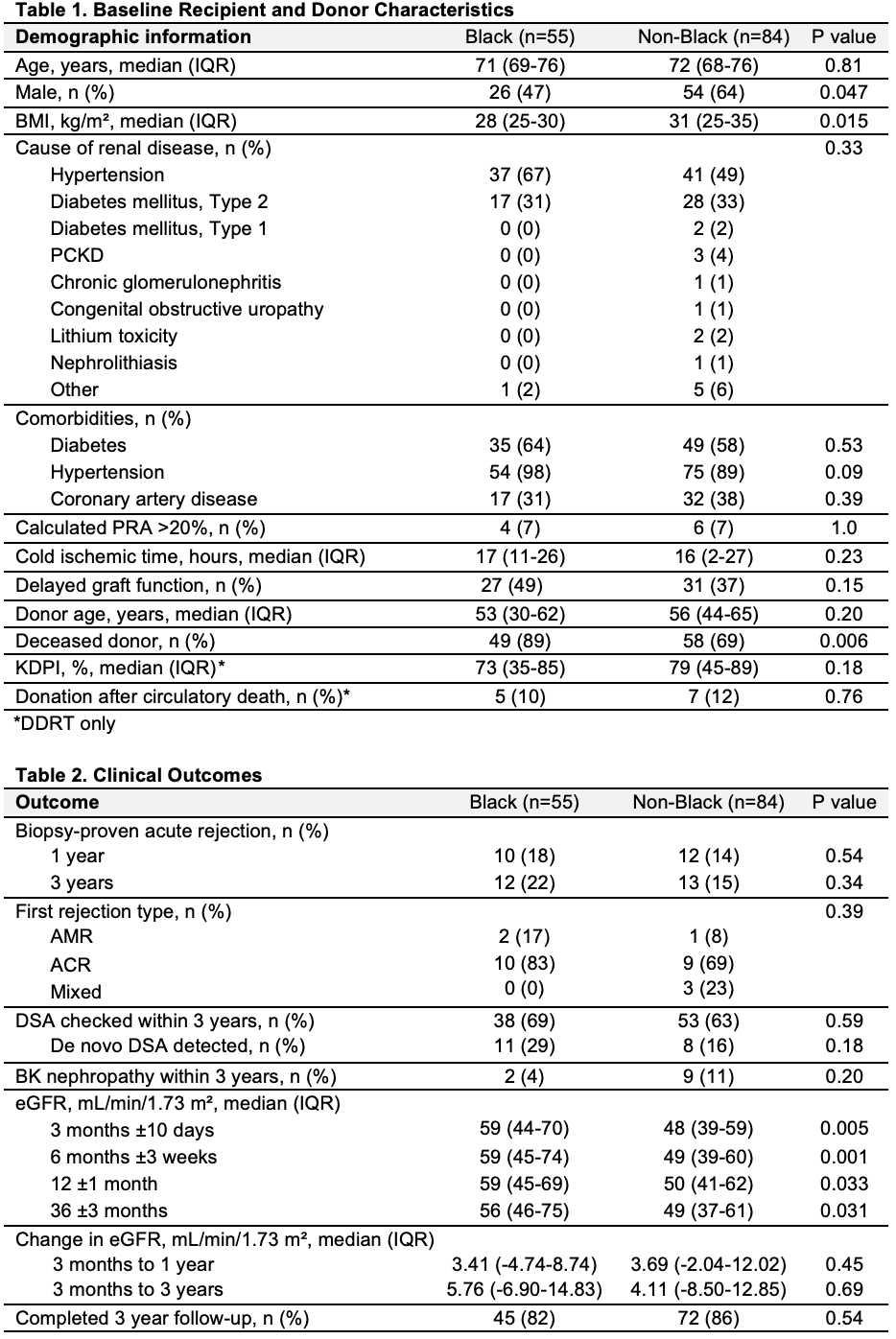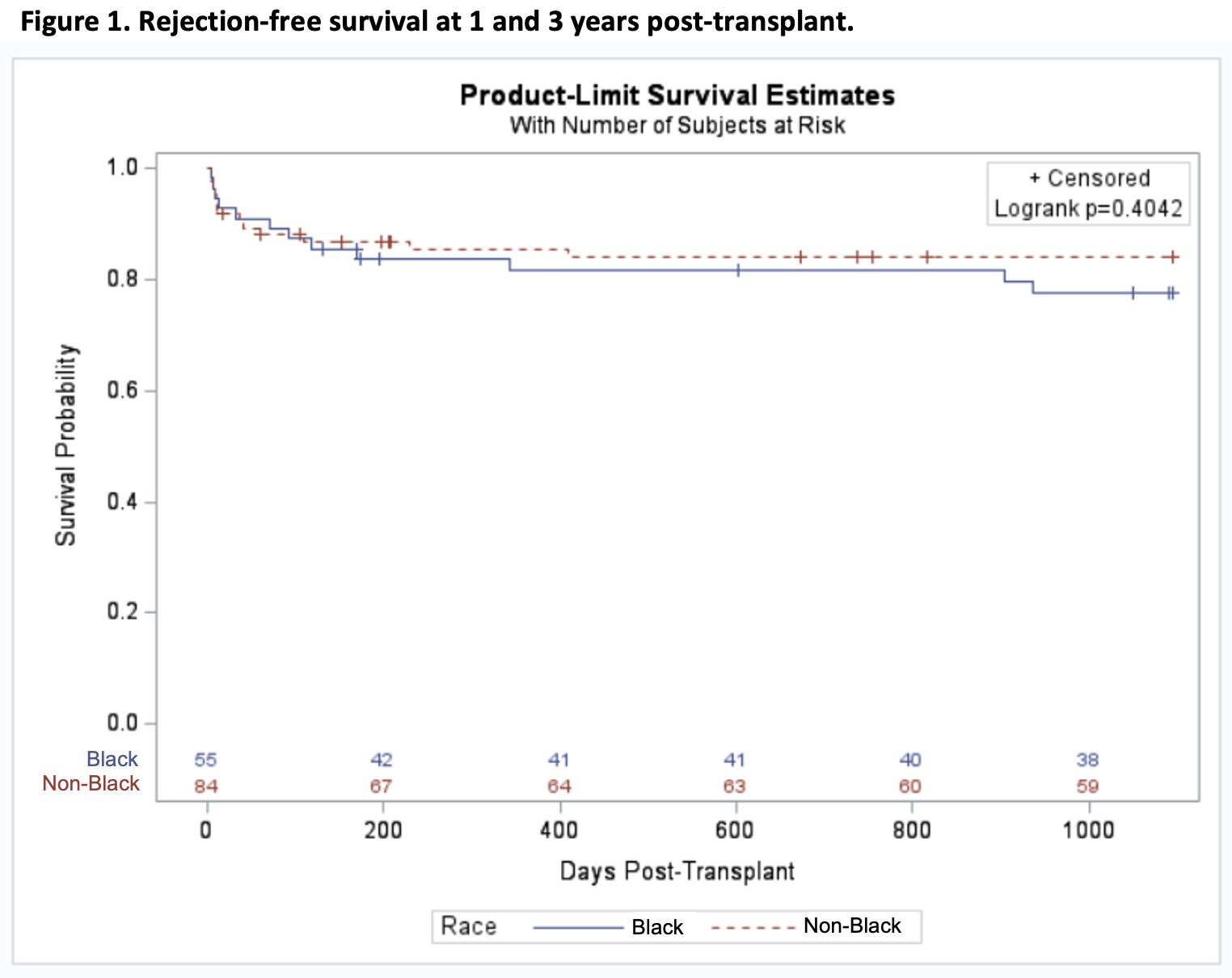Outcomes in Elderly Black Renal Transplant Recipients Receiving Basiliximab Induction and Early Steroid Withdrawal
University of Maryland Medical Center, Baltimore, MD
Meeting: 2022 American Transplant Congress
Abstract number: 1686
Keywords: African-American, Elderly patients, Glucocortocoids, Simulect
Topic: Clinical Science » Kidney » 38 - Kidney Immunosuppression: Novel Regimens and Drug Minimization
Session Information
Session Name: Kidney Immunosuppression: Novel Regimens and Drug Minimization
Session Type: Poster Abstract
Date: Tuesday, June 7, 2022
Session Time: 7:00pm-8:00pm
 Presentation Time: 7:00pm-8:00pm
Presentation Time: 7:00pm-8:00pm
Location: Hynes Halls C & D
*Purpose: Black renal transplant recipients (RTR) carry a higher risk of rejection (BPAR) and graft loss due to immunologic and non-immunologic factors. Lymphocyte depleting induction and steroid maintenance therapy mitigate this risk, but may be unnecessary in elderly RTR due to immunosenescence. To examine the impact of reduced immunosuppression in this patient population, we compared outcomes of Black and Non-Black elderly RTR who received basiliximab induction with early steroid withdrawal (ESW).
*Methods: First-time RTR aged >65 transplanted between 2013-2017 who received basiliximab with tacrolimus, mycophenolate and ESW were included. Key endpoints included graft loss, graft function (per MDRD equation), patient survival and BPAR at 1 and 3 years post-transplant.
*Results: Baseline recipient and donor characteristics of the included RTR (n=139, 55 Black and 84 Non-Black) are summarized in Table 1; the groups differed in sex, BMI and donor type. There was no difference between tacrolimus troughs, mycophenolate doses or resumption of prednisone therapy after ESW. No graft loss occurred within 1 year, whereas one Non-Black RTR experienced graft loss within 3 years. Patient survival was similar at 1 year (93% Black v 97% Non-Black, p=0.16) and 3 years (91% v 96%, p=0.17). Rejection-free survival did not differ at 1 or 3 years (Fig 1). Patients experienced comparable rates of BK nephropathy over the study period (Table 2). Median eGFR was numerically higher in Black RTR; however, change in eGFR over time did not differ between groups (Table 2).
*Conclusions: Elderly Black RTR who received basiliximab followed by ESW experienced similar rates of patient, graft, and rejection-free survival compared to Non-Black RTR over 3 years. These findings suggest non-lymphocyte depleting induction with steroid minimization is appropriate in elderly RTR regardless of race.
To cite this abstract in AMA style:
Garcia E, Sparkes T, Szczepanik A, Bova S, Bromberg J, Haririan A, Casale J. Outcomes in Elderly Black Renal Transplant Recipients Receiving Basiliximab Induction and Early Steroid Withdrawal [abstract]. Am J Transplant. 2022; 22 (suppl 3). https://atcmeetingabstracts.com/abstract/outcomes-in-elderly-black-renal-transplant-recipients-receiving-basiliximab-induction-and-early-steroid-withdrawal/. Accessed December 28, 2025.« Back to 2022 American Transplant Congress


